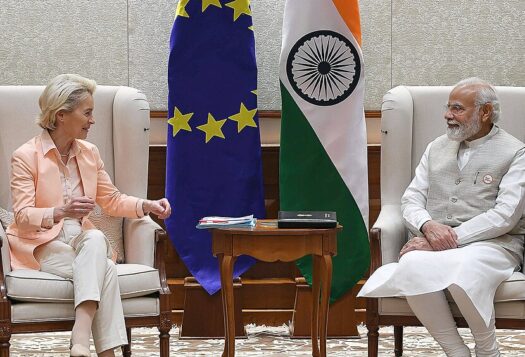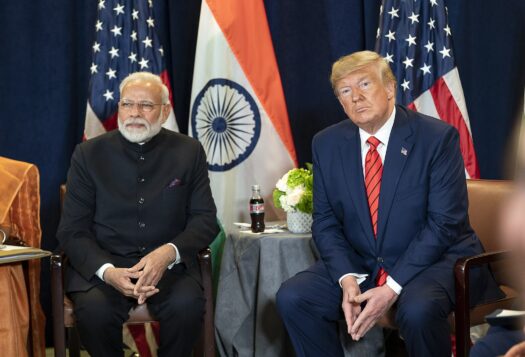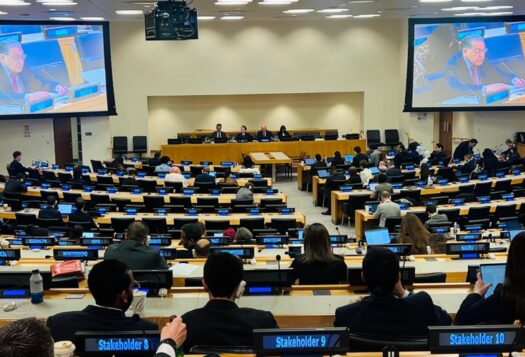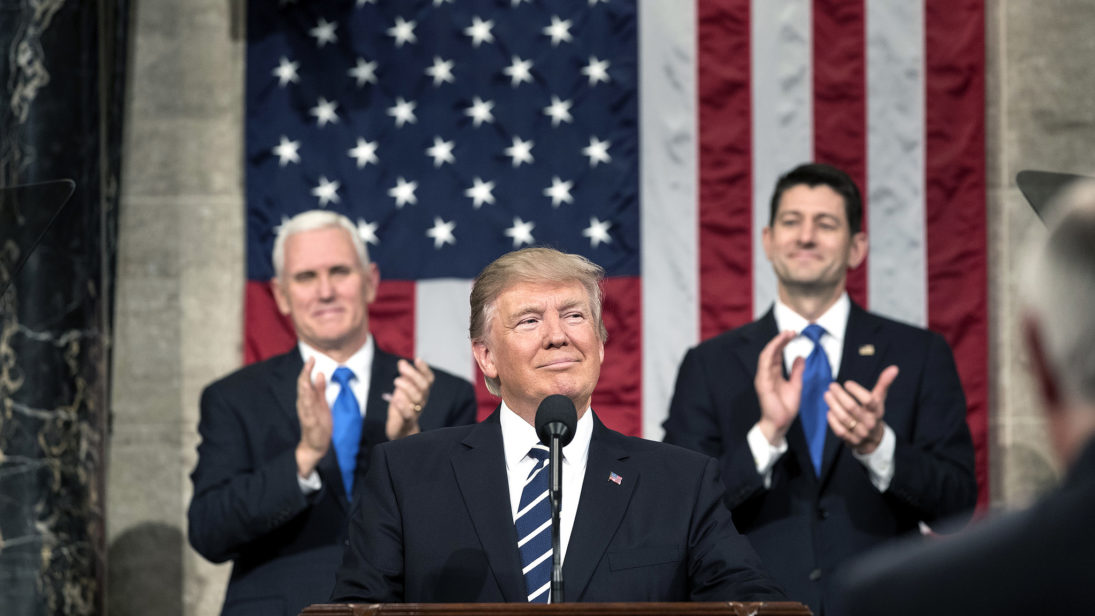
One month into 2018, President Trump’s extreme rhetoric and bizarre policy statements are already having negative implications. Earlier this month, Islamabad received a dose of this behavior when Trump accused Pakistan of lies and deceitful behavior. This prompted harsh rebukes and rebuttals from within Pakistan, and Beijing lent its full support to Islamabad. This aggressive rhetoric is reflective of President Trump’s zero-sum and imprudent approach to South Asia in the recently-released National Security Strategy (NSS) and National Defense Strategy, which acknowledge an increasingly complex global environment and focus on strategic competition from rivals such as North Korea, Iran, China, and Russia.
A Myopic View of Pakistan
The NSS depicts Pakistan, a Major Non-NATO Ally (MNNA), as a state that is lax against terrorist groups on its soil and reiterates the United States’ priority of pushing Pakistan to “intensify its counterterrorism efforts.” However, the NSS fails to account for factual evidence of Pakistan’s sacrifices, including a large number of Pakistani military and civilian casualties suffered since 2001. It also disregards the role that the country has constructively played in American-led initiatives in the region. Islamabad provides a crucial lifeline for Northern Atlantic Treaty Organization (NATO) supply lines passing through the Torkham and Chaman borders into Afghanistan. It has also hosted over a million refugees since the Soviet invasion of Afghanistan in 1979, a population that has drained Islamabad’s economic resources and compounded its domestic security challenges. This attempt at squaring in on Pakistan—a country that can use its geographic leverage and proximity to Afghanistan to cut off supply lines and build stronger alliances with China and Russia—defies common sense. When the United States alienates Pakistan, stability in Afghanistan becomes an even more elusive goal. This is especially important for the United States to recall at a moment when the Afghan government controls less than 60 percent of its own territory.
Per the NSS, the prospect of a nuclear confrontation between India and Pakistan requires the United States’ “consistent diplomatic attention.” It is true that deteriorating Indo-Pakistan relations and risk of miscalculation due to a resultant lack of communication, the recent surge in cross-border skirmishes, and the worsening situation in Kashmir are undoubted causes for concern, however, an all-out nuclear exchange is still remote as it heavily depends on decision makers, stakeholders, bureaucracies, management, and a cost-benefit analysis from both New Delhi and Islamabad. Deterrence also reduces the risk of nuclear conflict, as both countries cannot afford to earn the ire of the international community for reckless adventurism as well as ‘deterrence by punishment’ or the idea that any attack will be met with massive retaliation.
The NSS also stresses that the United States will “encourage” Pakistan to demonstrate that it is a “responsible steward of its nuclear assets.” Yet, on the subject of nuclear safety, there has not been sufficient recognition of Pakistan’s Strategic Plans Division establishing a Personnel Reliability Program, modeled on U.S. systems, where highly efficient screening procedures aim to minimize the risk of unauthorized access or misuse during peacetime.
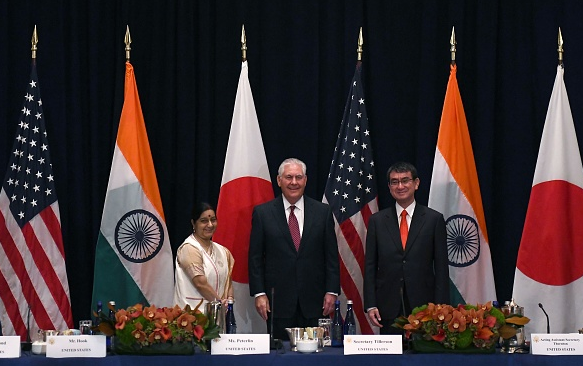
Exacerbating Regional Tensions
Whereas the NSS explicitly calls out Pakistan, the NDS outlines the formation of a security architecture to promote a “free and open Indo-Pacific.” Such a concept is bound to irk Beijing, which will undoubtedly view the creation of a “networked security architecture” among its rivals as a threat to its influence. In particular, the Trump administration’s growing partnership with India coupled with its decision to single out New Delhi in the NSS as a “leading global power and stronger strategic and defense partner” is likely to irritate Beijing. By favoring India over China and Pakistan, the Trump administration is creating foes, not coaxing rivals, which is a damning indictment for promoting any sort of prosperity in the region, as envisaged in both documents. Thus, if the United States acts in accordance with the strategies outlined in the NSS and NDS, it will continue to build upon its strategic partnership with India, establish formal and informal regional groupings consisting of India, Japan, and other Chinese adversaries, and favor India over China’s closest regional ally, Pakistan. Such activities will exacerbate existing levels of conflict between the United States and China, potentially destabilizing the region by provoking an aggressive shift in China’s strategic focus towards U.S. regional allies.
Neglecting Counterterrorism Challenges
The NDS emphasizes a focus on “inter-state strategic competition” over counterterrorism. This creates some confusion about the United States’ commitment to countering the threat of the Islamic State (IS) in South Asia. Although the group’s influence has been curbed significantly in the Middle East, it continues to maintain a presence in the Khorasan province of Afghanistan. As a foe of the United States, the Afghan government, and even the Taliban, IS will likely accelerate its attacks in the country, which does not bode well for regional stability. In addition, Afghanistan suffers gravely from warlordism and pervasive corruption, which cannot be dealt with through this zero-sum strategy. Instead, the NSS should have approached the issue with greater innovation, such as complementing a troop surge with a push for negotiations. It also could have articulated a vision for greater intelligence-sharing and cooperation between Pakistan and Afghanistan. The Quadrilateral Cooperation Group (QCG) provides valuable lessons in this regard, such as China and Pakistan wielding influence in Afghanistan and how their inclusion provides a deeper understanding of domestic Afghan dynamics by keeping all stakeholders, including the Taliban, on board.
Conclusion
In summation, the NSS and NDS have put forth a shortsighted vision for South Asia that will only alienate allies, embolden adversaries, and promote greater instability in the region. More innovation, research, and clarity are required for peace and stability in the region.
Editor’s note: With the recent release of the National Security Strategy by the White House and the National Defense Strategy by the Pentagon, the Trump administration articulated its strategic priorities at home and abroad. In this four-part series, SAV contributors Monish Tourangbam, Hamzah Rifaat, Amina Afzal, and Pooja Bhatt analyze how these policy formulations may impact South Asia. Read the entire series here.
***
Editor’s Note: Click here to read this article in Urdu
Image 1: The White House via Flickr
Image 2: Jewel Samad via Getty
